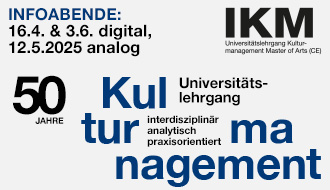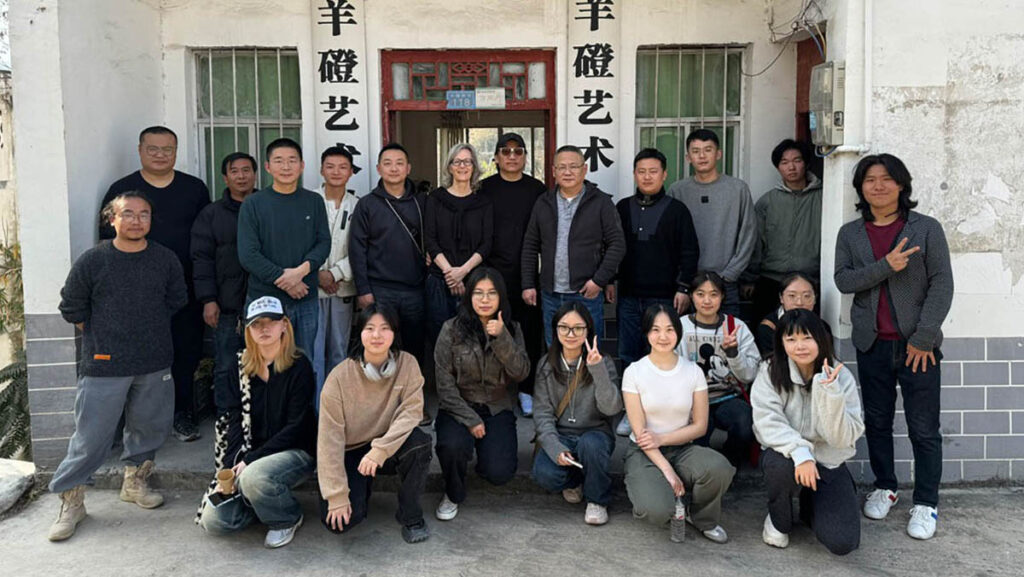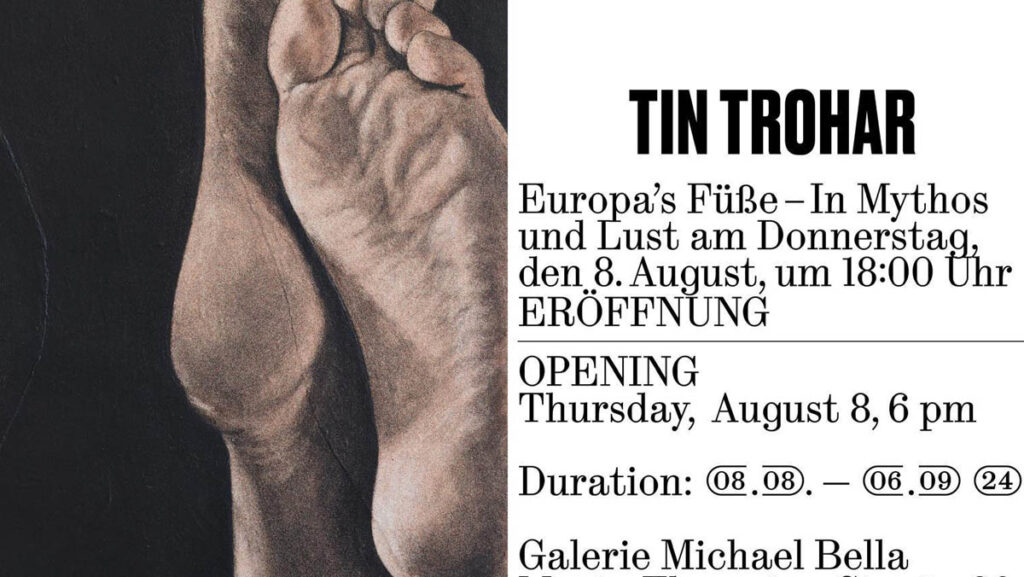
In her first solo exhibition, Conversando con Juana María Mulata (Conversing with Juana María Mulata), she brought together this research by combining pictorial installation and archival work. Currently, in her practice, she approaches the processes of divergence that occur during copying, transcription, or translation as spaces of plastic exploration through drawing, writing, installation, ceramics, printmaking, textile work, or performance.


Could you please share with us your childhood memories in Huelva, as well as how your diverse family background has influenced your art?
When I was a child, I used to live at my grandmother’s house with my parents. My mother comes from a Galician family who settled in Huelva in the late 1960s. When she was young, she was a leather craftswoman and sold in the Plaza de las Monjas in Huelva, where she met my father, who had come from Ethiopia. However, I was brought up by my Serbo-Croatian father, who came to Huelva during the 1990s. Until I was 15, we lived with my grandmother, who was very funny and used to be very attached to her Galician roots. I also have a close relationship with my sister, who lived in Ethiopia until she was 13 and now lives in London. The truth is that I have an Andalusian, Galician, Ethiopian, and Serbian family background, which on a vital level can be quite confusing as I don’t know many things through my own experience but rather from what I am told, what I imagine, and what I remember, so I find many contradictions, and in the end, I suppose I have quite a lot of room to make things up. In any case, this family question, although it could be a working material in artistic practice, I’m at a point where I would prefer not to force it or make it central. On the one hand, I am concerned about ethical questions of methodology, and on the other hand, the plastic sense of doing so. I’m much more intrigued by the factby the fact that if they do appear, it’s unexpected in the practical sense, and I can surprise myself with something that I hadn’t thought of beforehand, not so much as a project or as specific ingredients that I can separate out in my practice. For me, this way of doing it is actually a challenge because I think it implies a way of trying not to take for granted what should condition my practice.

How do the concepts of diaspora and post-memory inform the aesthetic construction of your work?
In fact, almost all my family lives in diaspora; that is, they do not live in their place of origin, so it is a feeling that has accompanied me. I was also born in Huelva, and now I live in Bilbao. Not living where you grew up can be very nostalgic. I think that diaspora and post-memory are very much related to a nostalgic way of being in the world. It creates a kind of nostalgic longing that is very strong, and maybe, in my case, it’s like someone who likes cupcakes. I couldn’t eat just cupcakes because it would hurt my stomach too much. Nostalgia is very sweetening—quite kitsch, actually—and I think it has a lot to do with wanting to copy something. You don’t live where you’re supposed to be anymore; you want to recreate something. If you want to live it, you have to emulate it, repeat it consciously and not by socialization. To see it that way, it really makes me very interested, because through the process of copying, so many mistakes happen that this not knowing, this space of uncertainty, seems to me right now much more reliable than a sense of belonging to a place or something very concrete.





Are there specific mediums or techniques you use to convey the nostalgia or feelings associated with those memories?
I guess that all kinds of activity require some kind of memory, especially from the body. Also, if nostalgia is cupcakes and I don’t want to be stuffed, I have to keep them under control (between being lactose intolerant and sugar making me very thirsty), or I give in to nostalgia, dive in, and there’s nothing more than that. In reality, what difference does it make? I am very much haunted by this contradiction when I do things. If I do something, I also have to ask a question. For me, that is the plastic, but something else can be done. Nostalgia, on the other hand, is a feeling that leaves me very immobile and invites me not to touch things too much. At least, trying to keep nostalgia under control makes me not take it for granted. It’s like a dance. The Juana María Mulata project is emotionally super nostalgic. At the same time, it was a plastic way of processing a story in a bodily way, but while I was doing it, I felt a lot of vertigo, a constant feeling that it was getting out of hand. Now I couldn’t do it that way again because I’m on a diet with nostalgia, but I’m very glad I did it; it was very important indeed; it has accompanied me since 2022, and it has given me a basis for thinking and comparing things in the process I’m immersed in. Now I’m trying to make things more manageable with my own body on many levels: material, conceptual, emotional, historical, something more related to the everyday. Maybe that’s why I’m interested in kitsch right now; it’s more accessible and invites me to write, draw, model, sew, perform… in a way in which the fun can appear, at least the fun as a working method. Right now, I think it’s important to incorporate a sense of gift, of birthday, of having a good time during the artistic making and the way of sharing it in the mediations. Even though I can’t expect much more from art, it already feels like quite a lot.

Can you share a piece of your artwork that holds special meaning to you?
The following work has a special meaning for me, it is a process that I started more consciously last year during my stay in the JAI programme. I did a little exercise in copying ASCII code drawings, hypertexts, reconfiguring, and rewriting. I did it while listening to music, as if it were a way of making a score, responding to the exercise proposed by Xabier Erkizia. A way of managing copying, transcription, translation, and composition. For me, this has been a more visible starting point to see writing as a way of drawing, drawing as a way of making code, computer code as a language of rhythm, and linking it to music. It was this process that gave me the possibility to use the digital kitsch, which should be of no interest (in principle), the (new) old-fashioned trendy, the photocopy, as a working material and see what happens. It also seems to me a way of not running away from the’mainstream’ but of digesting it and making another proposal.

How has your art evolved over the years?
I finished Fine Arts in 2022, and now it’s 2024. My first exhibition proposal was in September 2022. Two years have passed, but the truth is that I feel like I’m in the centrifuge of the washing machine. I don’t know. I feel confused, that I haven’t finished seeing things, and that I really need this or that. But I have a lot of excitement. I am in a moment of illusion because of my family, my loved ones, my friends, and my tutors. I feel a lot of support, and that makes me say that I have to continue, that I have to find a way to continue the practice. Right now, I see that the important thing about the practice is to expand and maintain it, that I don’t have to build a monument, and that calms me down a lot. Maybe what I think has evolved are my expectations. Before, I had a lot of expectations about art as a field of action in itself, what it should be, and its potential to change things. I think that caused me a lot of vertigo and blockage, to leave the everyday, to feel that I live in a gap and that I can’t relate to what should be and what is really happening. I want to reconcile what should be with what is really happening with small, everyday things with what I can encompass. Now to make a monument is to try to maintain the artistic practice and see how it is possible to continue it for years to come (whether I have commissions or not). I think that’s a lot of resistance as well.

Can you elaborate on how your artwork serves as a search for identity and a place in the world?
Mmmm… I guess my artwork is a search for identity as long as every manifestation of daily life is a kind of production of identifications, decisions, and a political field as well. For me, there doesn’t exist a neutral space of no-taste, even that kind of wish is a cultural production. In this sense, I try to think of identity as an open and contradictory process, never ends, always in a slow or fast-changing state, not to feel obligated or subordinated by certain conditions or take them for granted (that is the way I see intersectionality). So the point maybe is to think about identity as a changeable methodology, as a map that gives options of multiplicity and is not close to the very concrete, that is, if I am this, I am not the Other. Even when understanding oneself through an estrangement process, oneself is always the stranger. It makes me very worried when I think about identity because, on many levels, it is a production of dominance relations, and the heaviest power estructures keep protecting the Other thinking, so it can justify land occupation, genocide, extactivism, etc. The otherness is based on duality thinking, deeper rooted in occidental epistemology. Since a while ago, it was like screaming the need to run away from the cosmovision of duality, but it was not just a theoretical problem, more than writing. How do you approach it? Maybe as a plastic and transformative process.



Do you have any rituals or routines?
Try to get up early
wash my face
hair clips
get dressed
a good walk
sunbath…
You’re currently living in Bilbao. Have you had the chance to visit the Martha Jungwirth solo exhibition at the Guggenheim Bilbao? What else is noteworthy in the art scene there, and how do you see it evolving?
The art scene in Bilbao is what kept me there after finishing my master’s degree. I went at a time when I felt very linked to painting, and it was the only place in Spain with a master’s degree in painting. I was surprised to decide to stay; it wasn’t something I thought of at first. Bilbao now, for me, is like a bed! For good and for bad. For the bad, because I don’t want to fall asleep. For the good, because it’s a context where artistic practice is naturalized, it’s an action where there’s a community that gives it meaning. The fact of sharing with so many people of my generation who have their own practice, as well as the feeling of being guided by mentors, gives me a constant sensation of learning and being engaged, although I’m also intrigued to change places and see how I could articulate my practice. If eventually I decide to go back to Huelva… I don’t really know yet. Apart from the Guggenheim, where I sometimes go with my mother, in reality, the art scene in Bilbao happens more in independent spaces, like Bulegoa, Okela, Hemen Project, and so on. Also, with the initiatives of the cultural centers (Azkuna, TBK, etc.) and houses of culture, there is quite a complex network of diffusion and support. I haven’t had the chance to see Martha Jungwirth’s exhibition yet, but I hope to go soon. Recently, it was June Crespo’s exhibition at the Guggenheim, and I was fascinated.

How will you spend your summer?
Right now I’m in Huelva, at my mother’s house, with my sister, my brothers-in-law, and their children. It’s very stimulating; with my sister, I’m constantly learning, and I really enjoy listening to her stories. Also, I will soon be going to Grotta, an artistic residency in the area of Aracena (province of Huelva). I am very excited about this opportunity because it would be the first time I would do something in Huelva! Then I’m going to Barcelona for another summer residency at Tangent Projects, and I’ll be there until mid-September. On the 4th of October, I’ll do an intervention there. Let’s see what happens!
What else do you have planned for the near future?
I wish I could know!!! <3
Mariem Iman – www.mariemiman.com, www.instagram.com/mariemimanc/





